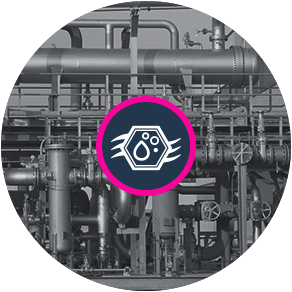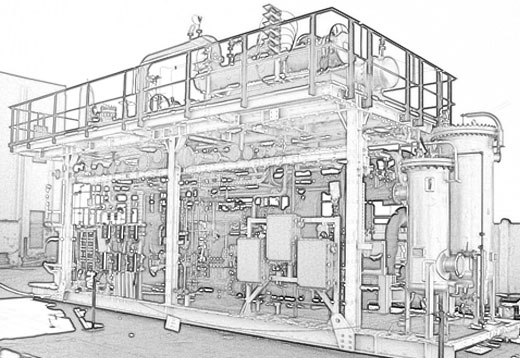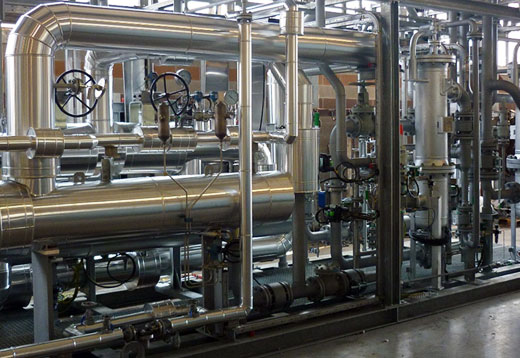
Dryers and Purification Unit
Drying and Purification Unit are based on the adsorption between a fluid (liquid or gas) and a porous solid (molecular sieves, alumina, silica gel). Each adsorbents exhibit different adsorption properties due to its characteristics and the various molecules are adsorbed at different grades.
This adsorption process is completely reversible, in fact, through the regeneration phase that gives to the system the necessary energy to de-adsorb the contaminants, the adsorber is prepared to a new operation cycle.
These plants are suitable for Oil Refineries and Petrochemicals Plant and the fluids treated are liquids and gases such as Propane, Butane, LPG, Toluene, Benzene, Hexane, Butene, Propylene, Ethylene, Hexene, Off-gas, Nitrogen, Hydrogen, Natural gas and so on.
Contaminants, that can be eliminated with this technology, are mainly H2O, Oxygenates, Mercaptans, NH3, CO, CO2, COS, H2S, CS2, SO2, methanol. Other contaminants, as O2, H2, etc. need specific catalyst to be eliminated from the fluids.
The list of possibility contaminant that can be stopped using a combination between adsorbents and catalysts is quite long and must be evaluated for each case. Our tailor-made approach from the very beginning project step, allow us to give to the Client the best process solution (technical and commercial) keeping the focus on the required performances.
The drying units and purification units are generally, skid mounted, automatically or manually operated according to the requirements.

TYPICAL PLANT
Very often the dryer packages are composed by n°2 towers (one in adsorption and one in regeneration) to ensure a continuous operation and by regeneration circuit using dry nitrogen in semi closed loop.
Each plant is sized based on the design process condition (flowrate, pressure, temperature, fluid composition) and on the required operating/regeneration cycles duration.
OPERATION

During the normal operation the gas or liquid flows inside the tower and the catalyst adsorbs the molecules of contaminant contained into the fluid to be treated. The flow could be from the bottom to the top or vice versa and the absorption bed becomes more and more saturated, therefore its adsorption capacity decreases over the time till the complete saturation. Once this operating limit has been reached, it is necessary to proceed with the system regeneration.
REGENERATION
These plants work at high pressure during the operation phase, instead of these regeneration phase with nitrogen that operates at low pressure. Due to these different process conditions, a depressurizing phase is necessary just before starting the regeneration process. To regenerate the bed inside the column, all the system, composed by tower and adsorbents, must be heated at proper temperature to relise the contaminant molecules from adsorbent.
The gas with contaminant coming from the column is cooled down and the water is separated and discharged.
The saturated nitrogen flow rate is reduced by a blowdown and integrated with a makeup of dry nitrogen to reduce gas water content and restore the right flow rate. A blower sends the cold nitrogen through a dedicated heater in order to continue the catalyst regeneration.
When the regeneration is completed all the system (tower and bed) is cooled by means of not heated nitrogen to restore the correct operating temperature.
The last phase is the tower re-pressurization in which the system pressure is increased until the operating value is reached.
The tower is now ready to be used in adsorption.
